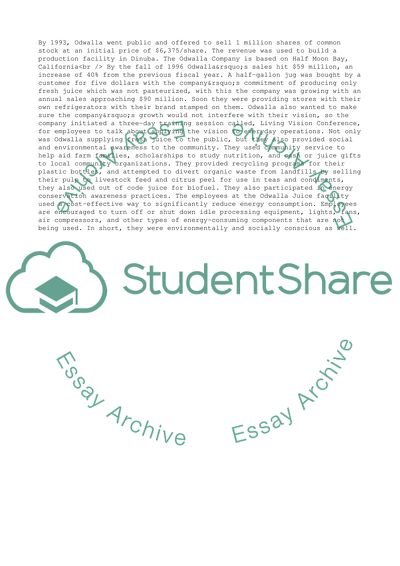Cite this document
(Odwalla Company Management Case Study Example | Topics and Well Written Essays - 2750 words, n.d.)
Odwalla Company Management Case Study Example | Topics and Well Written Essays - 2750 words. Retrieved from https://studentshare.org/management/1707027-report-of-crisis-management
Odwalla Company Management Case Study Example | Topics and Well Written Essays - 2750 words. Retrieved from https://studentshare.org/management/1707027-report-of-crisis-management
(Odwalla Company Management Case Study Example | Topics and Well Written Essays - 2750 Words)
Odwalla Company Management Case Study Example | Topics and Well Written Essays - 2750 Words. https://studentshare.org/management/1707027-report-of-crisis-management.
Odwalla Company Management Case Study Example | Topics and Well Written Essays - 2750 Words. https://studentshare.org/management/1707027-report-of-crisis-management.
“Odwalla Company Management Case Study Example | Topics and Well Written Essays - 2750 Words”. https://studentshare.org/management/1707027-report-of-crisis-management.


